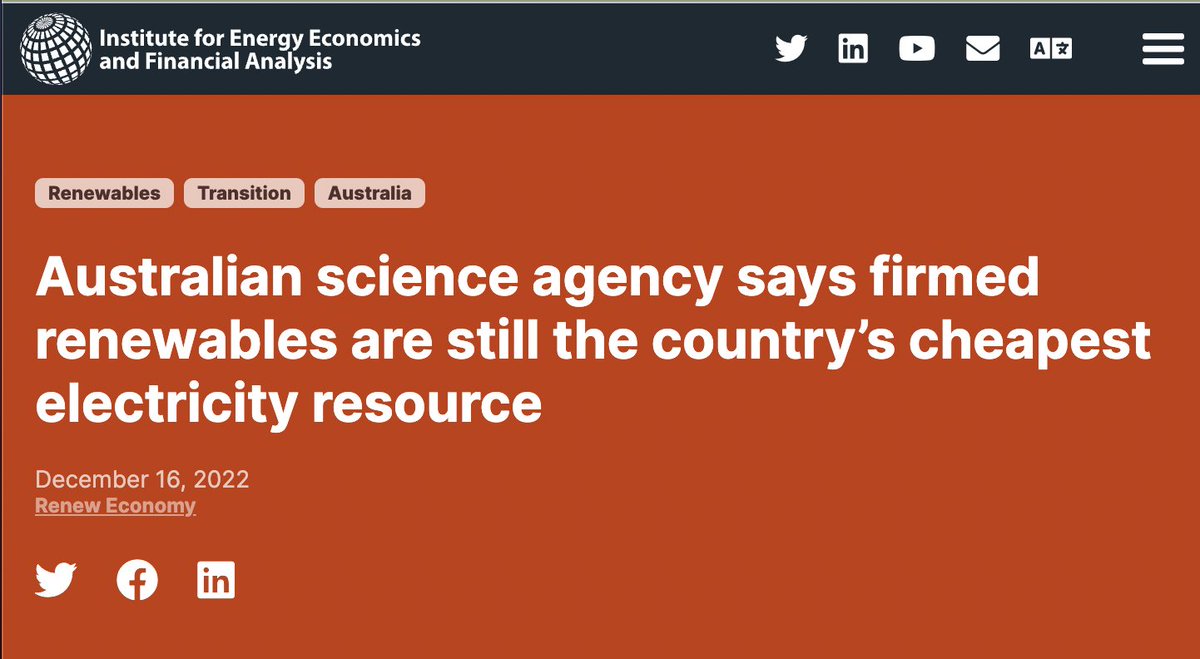The Creative Assumptions Behind Renewable Energy Cost Models
This blog explores the assumptions behind renewable energy cost models and the need for creative assumptions to make them cost-effective. It discusses the importance of analysts playing around with inputs to get the desired outcome for a DCF model.

Ferg
Full-time trader for 6yrs now. Currently, in uranium, oil, coal and tin. Sharing my research and thoughts about trades I'm in or considering.

-
Thread
— Ferg (@trader_ferg) June 7, 2023
Claiming renewables are the cheapest based on flawed LCOE (levelised cost of energy) is nothing new.
What was new was claiming they are still the cheapest "firmed" or with storage costs included.
These models always hinge on a few key assumptions/extrapolations. pic.twitter.com/KbheQYZn88 -
I figured there must be some "creative" assumptions to bring fully integrated wind and solar below the cost of coal and gas. pic.twitter.com/RahfaWKhs7
— Ferg (@trader_ferg) June 7, 2023 -
Similar to an analyst playing around with inputs to get the desired outcome for a DCF model.
— Ferg (@trader_ferg) June 7, 2023
Here the authors have projected out "learning rates", i.e. the assumed annual rate of cost reduction to reach the desired outcome. Plus referenced their own papers for good measure. pic.twitter.com/W0o3w35CUG -
Projecting a 10% assumed annual rate of cost reduction out to 2050 for solar is a stretch when considering the West is aiming to reshore their manufacture from China, which utilised cheap coal and cheap/forced labour.
— Ferg (@trader_ferg) June 7, 2023
The battery projections are equally egregious pic.twitter.com/JbJTrJxjax -
Projecting batteries to achieve 10-15% annual rate of cost reduction out to 2050, when before the digital ink dried on the CSIRO report, battery costs started increasing
— Ferg (@trader_ferg) June 7, 2023
Material constraints for EV batteries, let alone utility-scale batteries, are only going to drive costs up. pic.twitter.com/goTwvNu0mM -
Low carbon is low energy density (bar nuclear); hence you need more stuff to make an equivalent amount of energy.
— Ferg (@trader_ferg) June 7, 2023
More stuff/inputs = more inflationary pressures pic.twitter.com/3HwIRxebqw -
It would be comical if Australian energy policy wasn't being based on these models and projections.
— Ferg (@trader_ferg) June 7, 2023
CSIROs response to costs rising across the board is that the learning curve will stall for 12 months before reasserting itself.
In other words, they think it's "transitory". pic.twitter.com/7zJIeC0WYG -
For anyone that would like to get deeper in the weeds on the flaws of the learning curve as it relates to solar and wind, I highly recommend reading this study. pic.twitter.com/RUYoxAQ0K4
— Ferg (@trader_ferg) June 7, 2023 -
Take this example of the learning curve applying to the module cost of solar, which have gone from 36% of total installation cost to 13% (2017). Conversely, material inputs & labour are making an increasing % of total installation and good luck applying the learning curve to them pic.twitter.com/E2uCc4kfPb
— Ferg (@trader_ferg) June 7, 2023
